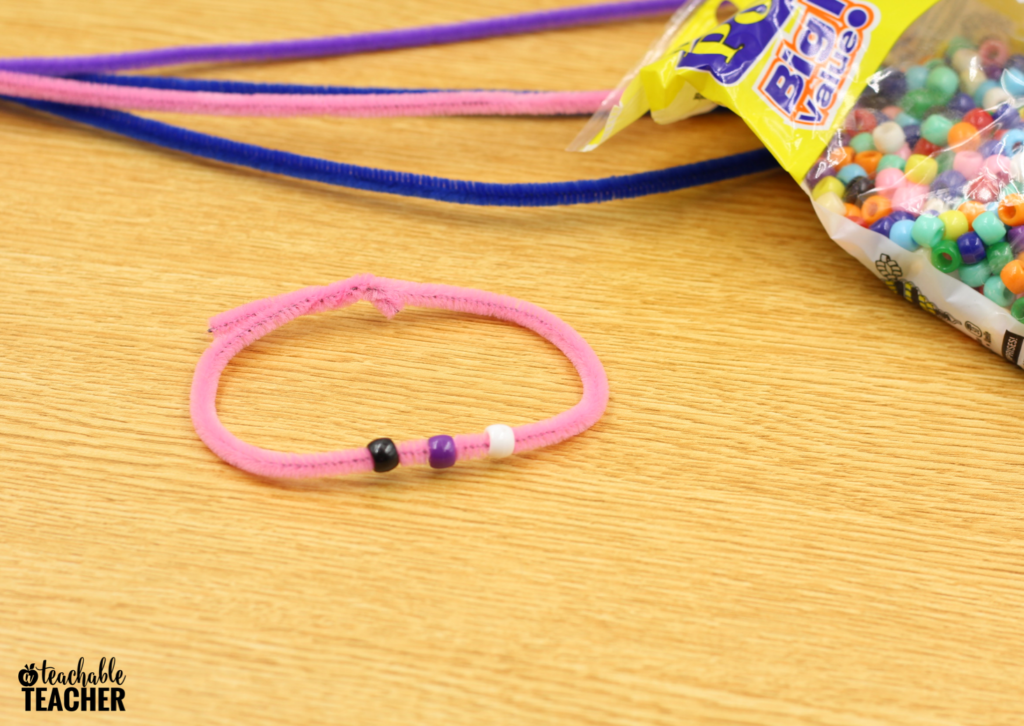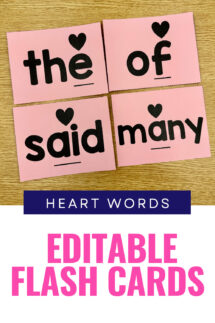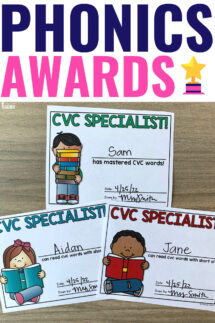These beginning phonemic awareness activities are simple and utilize materials you probably already have, but that doesn’t mean they are boring! In fact, my students beg to do them!
Beginning Phonemic Awareness Activities
Segmenting and Blending Sounds in Words
Beginning phonemic awareness activities can be daunting. Seeing that phonemic awareness can be “done in the dark” (meaning that it doesn’t involve using letters), it can seem as though it is an abstract concept to teach.
However, building beginning phonemic awareness is vital in teaching children to read.
A huge part of phonemic awareness is having the ability to segment and blend phonemes (sounds) in words. Practicing these beginning skills can be boring, but it doesn’t have to be. It can be hands-on and fun!

This post contains affiliate links. By purchasing through this link, we get a small commission. Rest assured – we only share links to products that we know and love!
Teaching reading intervention forces me to think outside the box. I need students to practice segmenting and blending every day without getting bored or disengaged.
I’ve searched through my moving classroom (AKA a rolling cart) and found some ways that teachers and students can use everyday items to build phonemic awareness! Just in case you don’t have the items in your classroom, I’ve linked them to Amazon [affiliate] throughout the post.
#1 – Bingo Chips
There are SO many uses for Bingo chips in the classroom. We love using them to blend and segment sounds. They can easily slide on any surface.

Start with two bingo chips and words with two sounds. Have students slide the chips up as they say each sound and run their finger across them as they blend them together. Since they usually come in bulk, you’ll definitely have enough for all of your students.

To make it harder, give students five chips and then say a word with 2-5 sounds. Have them decide how many sounds (chips) are in the word before segmenting and blending the word. FUN TIP: Give the students magnetic wands to pick up the chips when they are done!
#2 – Unifix Cubes
Who said that Unifix cubes are just for math?

When you use Unifix cubes to practice blending and segmenting sounds, students can physically connect and disconnect the cubes as they blend and segment words.

#3 – Tape Bubbles
What teacher doesn’t have excessive amounts of tape lying around? I attach small pieces of tape to itself (sticky side out) to create “bubbles.”

Students can “stick” each sound to the tape bubble as they segment. It’s a fun way for them to play with school supplies they aren’t normally allowed to play with.

#4 – Playdough
This is an oldie, but a goodie! Give each student some playdough and have them separate it into two, three, or four balls depending on the number of sounds in the words that you are going to use. Then have them “smash” each ball as they make the sound.

The “party favor” tubs are perfect because it’s enough to use for the activity, but not so much that the students will be distracted and want to play. You can even have them trade their “balls” so that they are each using different colors.

#5 – Pipe Cleaners and Pony Beads
I learned this one when I was teaching transitional kindergarten (TK). It stuck with me because it’s great for the kids to wear or take home. It also gives them a sense of ownership because you can have them assemble their own bracelets before you start practicing the segmenting and blending.

Just have them slide the pony beads onto the pipe cleaners and twist the ends of the pipe cleaners to close them. I love using this with my EL/ELL students. I let students take their bracelets home and tell them to teach segmenting and blending words to their parents, siblings, and pets. They love playing teacher, and it gives them more opportunities to build phonemic awareness.

#6 – Bingo Daubers
Bingo supplies and kindergarten sure do have a lot in common. There are two ways I use Bingo daubers.
- Using scratch paper, have students segment words and “dot” each time they say a sound. When they are done segmenting, they can point to the dots as they blend the words back together.
- For a more permanent resource, have students create a sound “tree” with Bingo daubers. Once the paint dries, students can point to the dots as they blend and segment words. You can even write their names on their paper and laminate it to make it more durable. Keep them at your small group table so that you can easily pull them out for warm-up activities. Students love having their sound mats, and they love using their friends’ mats, too!

I hope that you and your students find these beginning phonemic awareness activities fun and engaging! With so many different ways to practice blending and segmenting sounds in words, your students are sure to build their phonemic awareness skills!











